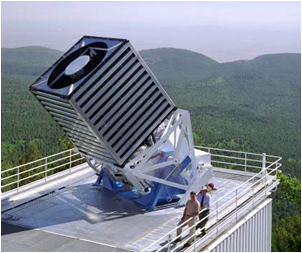
Photometric data can be gathered from any place in an image, but that does not mean that SkyServer reports measurements for every possible location. These data are called photometric data (“photo” = light “metric” = measurement). Measurements of the amount of light in each filter are recorded. The camera records 5 images at a time using 5 different colored filters. Photometric Data When you are looking at beautiful images of galaxies in Navigate you are looking at the results of light that is captured when the SDSS camera is attached to the telescope. The SDSS spectrograph produces a graph of the amount of light captured from the object across the electromagnetic spectrum, from ultraviolet to infrared light. When we refer to “two types of data” in the SDSS, we are referring to the light measurements we gather when two different instruments are attached to the telescope. Selecting the Objects with spectra check box reveals locations with a red box within the SDSS database that were chosen for special observation using an instrument called a spectrograph. Some forms of light, or electromagnetic radiation, are invisible to our eyes but can be measured by instruments. We are all familiar with the rainbow of colors that make up the spectrum of visible light, but light is much more than that. To see a large area of sky at once, the SDSS telescope required a.

Most modern telescopes, like the huge 10-meter Keck telescopes in Hawaii, are used to observe small patches of sky at a time.

Types of Data: SDSS Photometric and Spectroscopic Data The only information we get from stars, galaxies, or collections of stars in the sky comes to us as some form of light. Because the SDSS telescope will make a map of the whole sky, it must produce in-focus images over a large field of view.


 0 kommentar(er)
0 kommentar(er)
